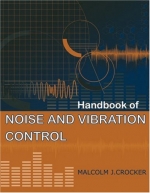Tab Article
Two of the most acclaimed reference works in the area of acoustics in recent years have been our Encyclopedia of Acoustics, 4 Volume set and the Handbook of Acoustics spin-off. These works, edited by Malcolm Crocker, positioned Wiley as a major player in the acoustics reference market. With our recently published revision of Beranek & Ver's Noise and Vibration Control Engineering, Wiley is a highly respected name in the acoustics business.
Crocker's new handbook covers an area of great importance to engineers and designers. Noise and vibration control is one largest areas of application of the acoustics topics covered in the successful encyclopedia and handbook. It is also an area that has been under-published in recent years. Crocker has positioned this reference to cover the gamut of topics while focusing more on the applications to industrial needs. In this way the book will become the best single source of need-to-know information for the professional markets.


